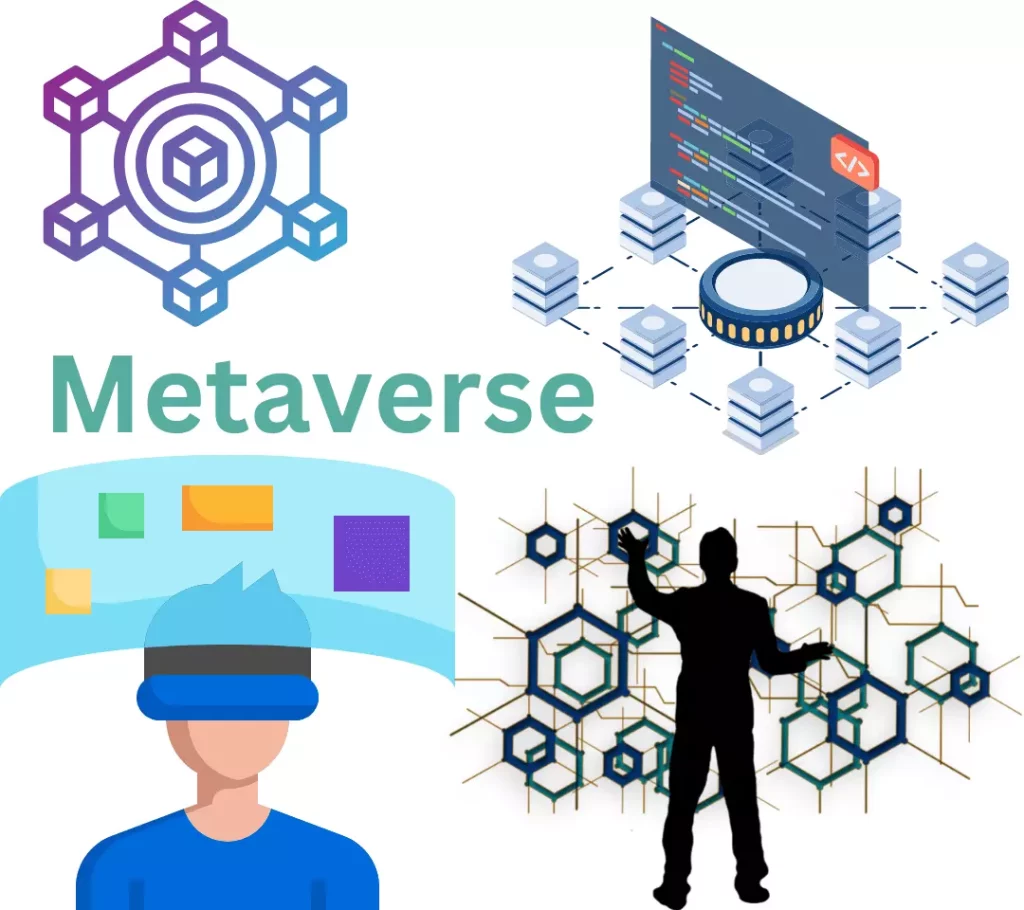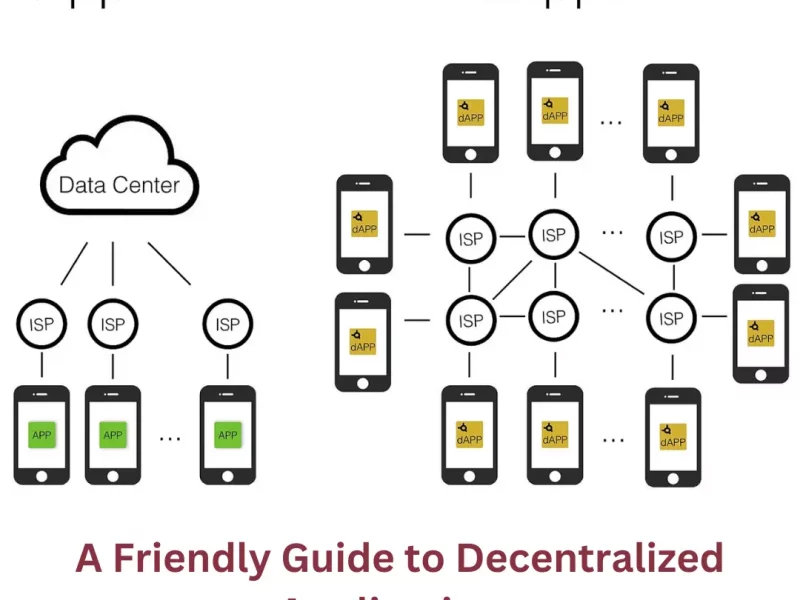The Metaverse is currently one of the most extensively discussed trends, and we’re all curious to see where it will lead. The many new prospects that the Metaverse can provide are constantly being discussed in the media, and we’ve already seen numerous headlines about how it will change our lives. It’s no surprise that some of the world’s top corporations, such as Microsoft and Apple, have already entered the race to construct the Metaverse. The key focus of this article is how to build a Metaverse project.

The Metaverse concept was popularised in the late 1990s by Neal Stephenson’s novel “Snow Crash.” Virtual reality gives users a fully immersive experience in which each person has an avatar to communicate with other users. It no longer appears to be fiction. Risingmax Inc is your best option if you need a Metaverse development company.
One of the most significant benefits of the Metaverse is that it allows us to quickly teleport from one digital experience to another, opening up a world of possibilities. But what are the prerequisites for launching a metaverse, and what technologies support it? Let’s look into those questions. We’ll also go over how to make money in the Metaverse, which firms are constructing metaverse platforms, and the importance of blockchain. Its applications in the Metaverse.
What are the key technologies underlying the Metaverse?
Blockchain, 3D reconstruction, virtual reality (VR), augmented reality (AR), the Internet of Things (IoT), and artificial intelligence are among the cutting-edge technologies and techniques required to create an immersive metaverse experience (AI).
Virtual reality (VR)
If we ask you which metaverse technology will be the primary means of entrance to the Metaverse, we bet you’ll choose virtual reality – and you’d be correct.
VR creates computer-generated virtual landscapes that people explore using VR headgear, sensors, and gloves. These devices are typically linked to a user’s PC or smartphone and show virtual graphics. Wearing full-coverage headphones isolates you from your surroundings in the actual world, which is fundamental to the metaverse notion.
Thanks to Metaverse VR, you will be able to hear, feel, and engage with individuals worldwide. Metaverse virtual reality may transport you to any location in seconds by combining hardware devices and software solutions to create an immersive environment.
In recent years, the VR technology space has seen some significant improvements. The creation of VR-based games such as Half-Life: Alyx, for example, will surely lead to widespread acceptance of this technology.
However, VR is one of many technologies at the heart of the Metaverse. Let’s look at what else you’ll need to create your Metaverse.
Virtual and augmented reality
AR is a technology that combines digital and real-world visual elements. It uses computer vision to recognize real-world environments, employing technology such as item recognition, facial recognition, and movement tracking. AR typically requires a camera and screen access to detect existing physical surroundings and overlay more information.
Metaverse AR will allow you to observe your environment through interactive digital images, providing remarkable and one-of-a-kind experiences. Augmented reality has already altered how we interact with the digital world. Seeing how a new pair of sneakers will appear on you with simply your smartphone’s camera no longer shocks anyone.
Many well-known firms have already embraced augmented reality to provide us with new ways to engage with the world. And, let’s face it, they do it well. For example, IKEA uses augmented reality to allow customers to see how their furniture would look in their homes.
The global AR industry is expected to reach $97.76 billion by 2028, and we will learn about fresh advancements in Metaverse augmented reality very soon.
Blockchain
Blockchain technology’s un-hackability and immutability, as well as its quick confirmation of information and cryptographically secure transactions. It will undoubtedly make it the key technology that will comprise the Metaverse.
Based on what we’ve seen so far, people will engage in the Metaverse in a completely virtual world. As a result, the platform on which they will interact must be secure. This is what blockchain is all about. Furthermore, the technology has numerous other advantages, like decentralization, user governance, and interoperability. They are making it an excellent fit for the Metaverse.
There’s also no doubt that non-fungible tokens, or NFTs, will be the ideal means to identify and transfer ownership of digital assets in the Metaverse. We may anticipate that all avatars, objects, talents, and other metaverse assets will be offered as NFTs.
There are numerous fascinating instances of crypto metaverses – solutions that combine blockchain technology and crypto assets into their economies, such as metaverse tokens or Metaverse NFT. The most notable projects that combine metaverse aspects are undoubtedly Decentraland, Axie Infinity, and The Sandbox. These platforms employ metaverse goods. Such as digital land or digital objects, represented by various metaverse tokens whose ownership is documented on the blockchain.
Three-dimensional technologies
To create a genuinely immersive experience and make the metaverse work, you’ll need technology that can scan the real environment, develop a 3D model, and then transfer that model to the virtual world. Fortunately, there is already a solution that allows this. You may create natural-looking places that are as near to the real world as possible by employing 3D reconstruction technology.
You can use 3D reconstruction to create accurate 3D photorealistic models of the physical world, such as buildings, locations, and objects. Then, a virtual replica in the Metaverse is created using 3D spatial data and 4K HD photos. The 3D Metaverse creates realistic spaces and a fully immersive user experience due to this technique.
3D reconstruction sensors are already available from companies like Nikon, Zeiss, and Faro. Despite their high cost, these devices can be exact to millimeter-level accuracy. There are also less expensive alternatives, such as Apple’s LIDAR and Microsoft’s Azure Kinect.
Artificial intelligence
AI can process massive amounts of data at unprecedented speeds while learning from previous interactions. Because of these qualities, it has been widely applied in various scenarios ranging from business strategy planning and decision-making to facial recognition and data classification.
Artificial intelligence can be used with non-player characters (NPCs) to facilitate lifelike dialogues with users and to accomplish specific jobs. Second, AI can be utilized to create metaverse avatars – AI engines can analyze 3D scans and construct more lifelike avatars. AI can also assist you in creating different facial expressions, clothing, and other accessories to enhance digital avatars.
The Internet of Things (IoT)
That brings us to the Internet of Things, another metaverse technology. In the Metaverse, there are several notable IoT applications. But first, let’s learn about technology.
The Internet of Things (IoT) employs sensors and devices to connect everything in the physical world to the Internet. Every Internet-connected device has a unique identifier. They are also capable of automatically sending and receiving data. Currently, the Internet of Things connects voice-activated speakers, thermostats, and other devices to various data sources.
One of the most important metaverse applications of the IoT will be collecting and disseminating data from the physical world. IoT data feeds, for example, could be used to change the way metaverse objects operate based on different conditions (e.g., current weather), which would help improve the overall accuracy of a digital representation.
Top 5 corporations constructing the Metaverse
Though metaverse development is still in its early stages, here are the top five companies taking the first steps:
1. Microsoft
On top of its Mesh technology, Microsoft is developing a set of metaverse applications. These mixed and extended reality apps combine the real world with AR and VR.
Meanwhile, the Company’s goal is to build a work-focused metaverse within Mesh where customers can utilize Microsoft Teams, Windows, and other services in VR. The technological behemoth also intends to use avatars and possibly holoportation in the workplace to improve and accelerate problem-solving.
2. Meta
One of the primary metaverse firms producing virtual worlds is Facebook, now known as Meta. By purchasing Oculus in 2014, Meta committed to developing virtual reality. So far, the business is concentrating on developing headgear to deliver the most realistic experience imaginable. They’ve even formed a new team dedicated only to creating metaverse initiatives. They aim to create a virtual environment where avatars can engage in commerce, travel, and pleasure. With its growing creative economy, Meta might have a workable prototype in 2-5 years.
3. Nvidia
Although the Californian chipmaker is not actively developing its metaverse platform, it will be a critical enabler. Omniverse is the Company’s solution for connecting 3D worlds into a shared virtual reality. Omniverse can create real-life simulations of buildings, plants, and industries, among other things.
4. Apple
Apple is yet another tech behemoth attempting to advance the Metaverse. The business has developed a Head Mounted System (HMD) Virtual Meetings software for usage in the open Metaverse. During virtual meetings, Apple also plans to duplicate users’ physical hand or arm movements. Users can activate the Physical Muting icon on their HMD interface if they do not wish to display their expressive activities.
5. Decentralization
Decentraland was an early adopter of the Metaverse. One of the better metaverse examples is the Decentraland project. It’s a 3D world where gamers can grow virtual plots of land, perform concerts, and plan social activities. Blockchain is at the heart of Decentraland’s economy. It has its coin, MANA, based on the Ethereum network.
Blockchain applications in the Metaverse
We’ve already mentioned how important blockchain is for metaverse development, seeing it as the main technology that will provide interoperability, permanence, and a full-fledged economy. Let’s look at some of its real-world applications and usage scenarios. These are as follows:
- NFTs are immutable in-game assets that allow users to create real money within the Metaverse.
- Self-identity identification, enabled by blockchain technology, ensures transparency and allows users to securely retain their avatars’ identities, appearances, activity history, and so on, preventing fraud.
- Incentives for creators to ensure that no unfavorable rules control exchanges
- Real estate assets should be governed similarly to in-game purchases, so blockchain may operate as an immutable record of how real estate is created, traded, and so on in the Metaverse.
Final thoughts
As we can see, the metaverse trend will only get bigger; therefore, the sooner you jump in, the better. Though the Metaverse is still in its early stages, advancements in blockchain, AR, VR, 3D reconstruction, and other technologies contribute considerably to its rapid development. Furthermore, popular metaverse examples such as Decentraland demonstrate that it is a worthwhile investment.
Whether you want to construct a full-fledged metaverse project or take your first steps into the Metaverse, consult our expert consultants and developers, and we will find the ideal option. If you are looking for a Metaverse consulting company, we are one of the well-known brands in this field.



